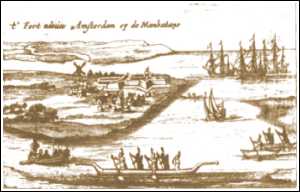Introduction
Until lately, the American historiography of the seventeenth-century Dutch Republic seemed like a history of commonplaces. We all seemed to personally know those rich Amsterdam merchants, controlling a vast empire of trade from their comfortable houses on the canals of this wealthy metropolis. Beyond the historical cliches, however, lies a kaleidoscopic universe representing the first modern economy of the world. In a brilliant synthesis, using much new material, A. Van der Woude and J. De Vries have recently shown how modern in many respects that society really was. In their book, The Netherlands 1500-1815. The First Round of Modern Economic Growth, agriculture is restored to its rightful place as a vital part of this new society. The highly commercial type of agriculture that developed in the Low Countries in the late middle ages served as a basis for all future developments. Although much has been published in recent decades on agriculture in the early modern period in the Dutch Republic, this is not the case in respect to agriculture in the Dutch colonies. Here - at least to a certain extent - the proverbial Amsterdam merchant still dominates.note It is perfectly clear, however, that if we want to understand the seventeenth-century colonial life, we also have to understand the basics of New Netherland agriculture. There is a lot to be said about New Netherland farming. Much more than some historians want us to believe. Take for instance P. Hedrick. He told his readers that maize was a major crop among the colonists.
It is perfectly clear, however, that if we want to understand the seventeenth-century colonial life, we also have to understand the basics of New Netherland agriculture. There is a lot to be said about New Netherland farming. Much more than some historians want us to believe. Take for instance P. Hedrick. He told his readers that maize was a major crop among the colonists.
There is not much evidence in the seventeenth-century sources to support Hedrick's statement, though David Steven Cohen repeats the story.note Hedrick writes in A History of Agriculture in the State of New York that, from the beginning, much corn was raised, native fashion.note Perhaps Hedrick's opinion is based on Edmund B. O'Callaghan, who imprecisely translated a statement made in 1650 by Cornelis Van Tienhoven concerning the use of maize by the first colonists. Where Van Tienhoven wrote that maize may have served in the beginning as bread for people and food for animals, O'Callaghan simply omits "voor t eerst" (in the beginning) in his translation. The impression is given that, normally, the Dutch ate maizebread. This is only one of many mistakes in Hedrick's view of colonial agriculture. In fact, he made a mockery of New Netherland agriculture by comparing colonial farmers to the farmers of biblical times, making the statement that the Romans would have put the best colonial farmers to shame.note
Maize was only of minor importance. The sources show that wheat was of overwhelming importance in nearly all parts of the colony, with the exception of Manhattan, where much rye was grown, with oats at a close second place and all other grains playing minor roles. Bread was made of wheat or rye. Specified rents paid in grain in the years 1642 and 1643 on three Manhattan farms show us that sixty-one percent was paid in rye, eighteen percent in barley, fourteen percent in wheat and seven percent in peas.note At most, maize may have been of some importance on smaller plantations for making the soil ready for growing other grains. There are a number of cases in which, on some scale, maize was bought from the natives.note In 1639, for example, two New Amsterdam merchants contracted for the purchase of 500 schepels of maize from the Indians.note A schepel is a grain measure, that comes down to 0,764 bushels. This is an indication that New Netherland agriculture at this time did not produce enough to meet its own needs.
A better source than Hedrick for understanding Dutch colonial farming is the former director-general of New Netherland himself, Petrus Stuyvesant, who in 1667 wrote "Since their manner of agriculture is wholly different from that way practised by the English nation here, and therefore cannot possibly expect a supply from England of those utensils relating to the cultivating of the land, but of necessity must expect them from their own country' (otherwise) it will not only be impossible for them to subsist, but they must be constrained to forsake their tillageand seek out a livelyhood elsewhere."note In this light, the importance of Dutch farming on the North American mainland needs to be reassessed. The West India Company wanted New Netherland to be the granary of its western Atlantic empire. After 1654, when the Dutch lost their last stronghold in Brazil and the dreams about this western empire came to an end, farms were already so widespread in the colony that no one doubted the possibilities of the rich lands in this part of North America.
In the first fifteen years of its existence, farming in New Netherland was heavily controlled by the West India Company. Company farming failed in the end. This essay analyses why it failed and will show why the West India Company did not succeed in providing its own colonists with bread, let alone the other colonies in the West.
